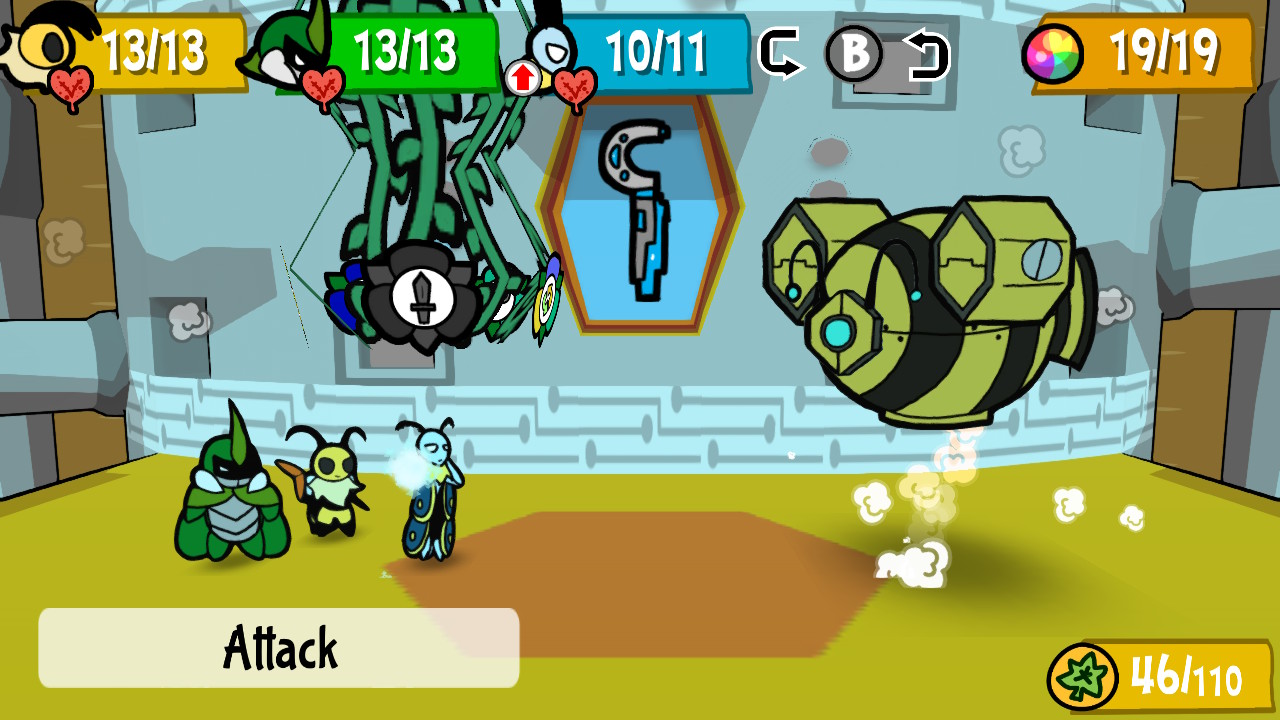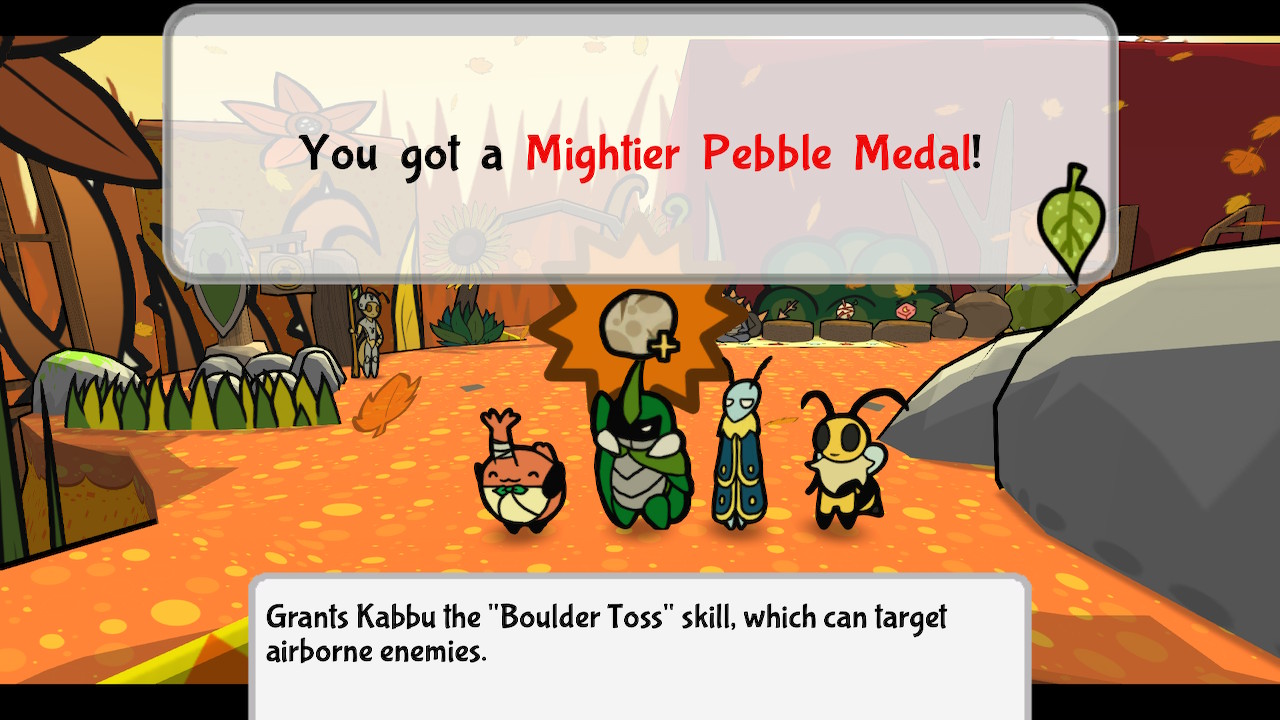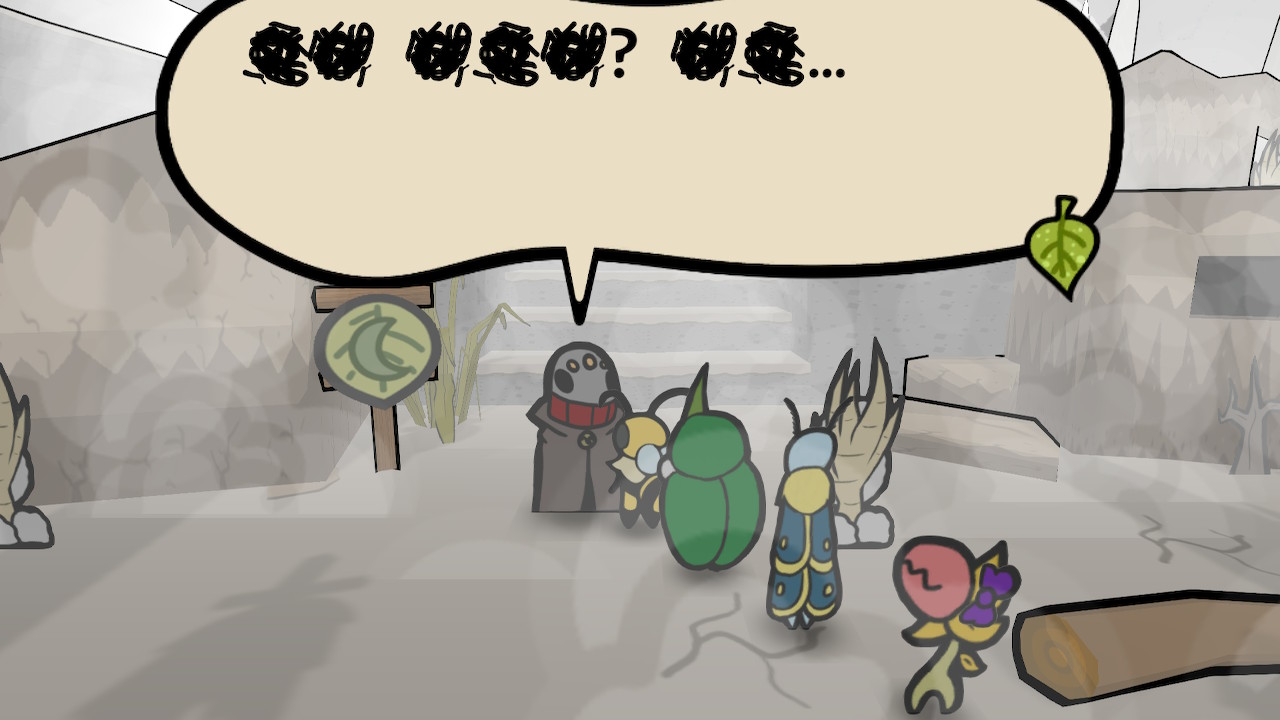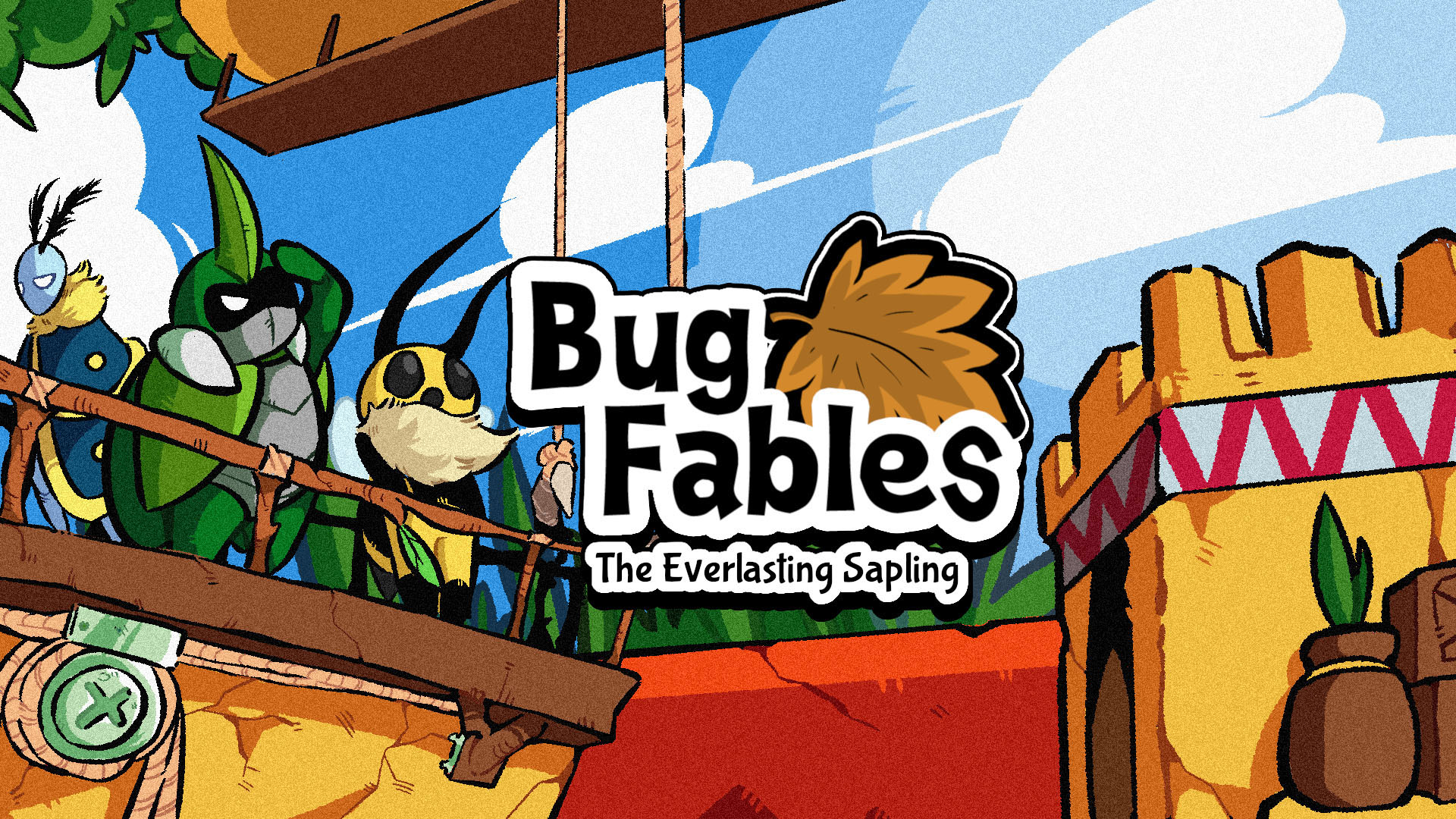Moonsprout Games’ turn-based RPG Bug Fables: The Everlasting Sapling is a love letter to the first two games in the Paper Mario series. Those first two entries in the console-based Mario RPG series are regarded by many as some of the best games ever made by Nintendo, which is no small feat.
Bug Fables was made with a crowdfunded budget of just under $25,000. Considering the massive scale and high standards of quality set by the original two Paper Mario games. It seems that attempting to capture the magic.
I can say confidently, after having – at time of writing – dumped more than 35 hours into the the game, that Bug Fables is the single best Paper Mario game that I’ve played since Paper Mario: The Thousand-Year Door.

Story
I don’t want to dwell on or over-emphasize the extent to which Bug Fables takes inspiration and mechanics from classic turn-based Paper Mario. So I’ll refrain from going into detail about the similarities unless a major difference between the two comes up. Okay? Okay. For now, let’s take a look at the story in this self-titled “Fable”.
Bug Fables tells the story of Kabbu the Beetle, Vi the Bee, and Leif the Moth, three complete strangers who end up forming an expedition team by circumstance to carry out quests and treasure hunts for the mighty Ant Kingdom. What starts as a simple and friendly quest into the local monster cave turns into a surprisingly long, emotional, and effectively dramatic story of three friends learning and growing together in an attempt to save all they love.
In many respects, it’s a standard RPG story. But it’s presented very well and the high density of memorable and likable characters both in the main cast and on the side kept me intrigued over the course of the plot. Especially when the odd serious moment popped up in the middle of what was mostly a lighthearted tale. I’ll avoid spoilers for now, but just now that there are a solid story and overarching quest to follow on this adventure. With that laid out, let’s talk about gameplay, and how it differs from the familiar Paper Mario formula.
Combat
Unlike the games that it takes inspiration from, there are no bonus partners that get added to party over time. The three members of your party that you have at the start of the game will be your whole party for the rest of the game. Normally for myself and many others part of the fun of an RPG like this is found in adding new characters with new backstories and all to the party. You may not have that to look forward to in Bug Fables. But as a trade off the game is wholly designed around having just these three party members.
Each member of the party gains new abilities both in the overworld and in battle over the course of the story. Which leads to continuous development of new strategies. As well as new obstacles to overcome and puzzles to solve in the overworld. Not to mention, the core combat itself is built around.
The combat is a familiar and time-tested affair. But with it’s own twists on the classic staples of Paper Mario-style turn-based combat. Every character has their own distinct advantages in battle. Which makes each of them equally useful for different reasons. Kabbu can only attack the first ground enemy but can piece defense. Vi can hit airborne enemies, and Leif can attack enemies buried in the ground. Everyone also has a series of different special moves which take TP (Teamwork Points) which they gradually earn throughout the story as well as by leveling up.

Leveling and Medals
Adding further depth to the combat are both the leveling system as well as the Medals. Every time the party levels up you get to choose between a permanent addition to health, Teamwork Points, or Medal Points. So your growth in each area is dictated entirely by how you want to build your strategy.
The Medals on the other hand allow for many, many different battle strategies and builds for your characters. There are medals that swap defense for attack. Some that prevent status ailments, and even some that unlock moves for certain characters. It’s straight out of classic Paper Mario. It is just as wonderfully simple and yet staggeringly deep as before.
Side Quests & Bonus Content
As for what you do outside of battle, there’s plenty extra to do. There are boss fights hidden away on secret paths, dozens of side-quests with their own associated characters and storylines. In general a ton of positive reinforcement and rewards for experimentation and exploration. While the world isn’t the largest out there, but no space is wasted. You’d never guess how small the game’s budget was when looking at some of these massive areas loaded with different enemies and obstacles. Had this game released at the time of the original Paper Mario on the N64 or PS1, it would have easily been a rival to the original series’ quality and scale.

Special
The side quests in particular are something special. Don’t expect Witcher 3 levels of depth and scripting for them or anything. But you still get a ton of excellent side-stories, extra bosses, and loads of intriguing lore and secrets that help build the world of Bugaria. On that note. there are also Lore Books you can collect to help fill you in on the history and culture of the world around. Adding more texture and narrative depth to what appears on the surface to be nothing more than a cutsey game about bugs.
There’s also a simple yet deeply fun to explore cooking system that encourages risks and experimentation. A Magic the Gathering style card game on the side that gets better the more you study enemies in battle, and tons of different items to find and collect. It almost seems like you’ll never run out of things to do, and even though you do eventually. I promise you you’ll be satisfied with your own journey by the end.
Conclusion
There is much more good I could say about Bug Fables. I could go into detail about every little reference and element directly lifted from Paper Mario (of which there are MANY), or how many moments from the story will stick with me for a long time. But I’d rather say this: If you enjoy classic Paper Mario or good RPGs in general, you need to play Bug Fables.
I must stress that Bug Fables is not a perfect game. I did come across the occasional minor bug or performance issue. But it was only ever a minor annoyance at worst, so I can forgive that. The controls for overworld abilities can be a bit difficult and sometimes annoying. But it never becomes too serious or stressful of an issue.
Any other complaints I might have would be to the tune of “the Paper Mario games did X element better”, and I don’t want to linger on thoughts like those, because I believe this game stands strong enough on its own.
While Bug Fables may not be better than the classic Paper Mario games. It might be just as good and deserves to be regarded as a modern RPG classic all it’s own. I am hopeful that many of you will go and enjoy it for yourselves. This game made something fresh and new out of an old formula and made something magical that is all their own.
Greyson is an aspiring author and YouTuber with dozens of consoles and hundreds of gaming hours under his belt. He’s always looking for something new to play, and is always happy to share it with other people. He also likes the Shantae games, like, a lot.


Comments are closed.